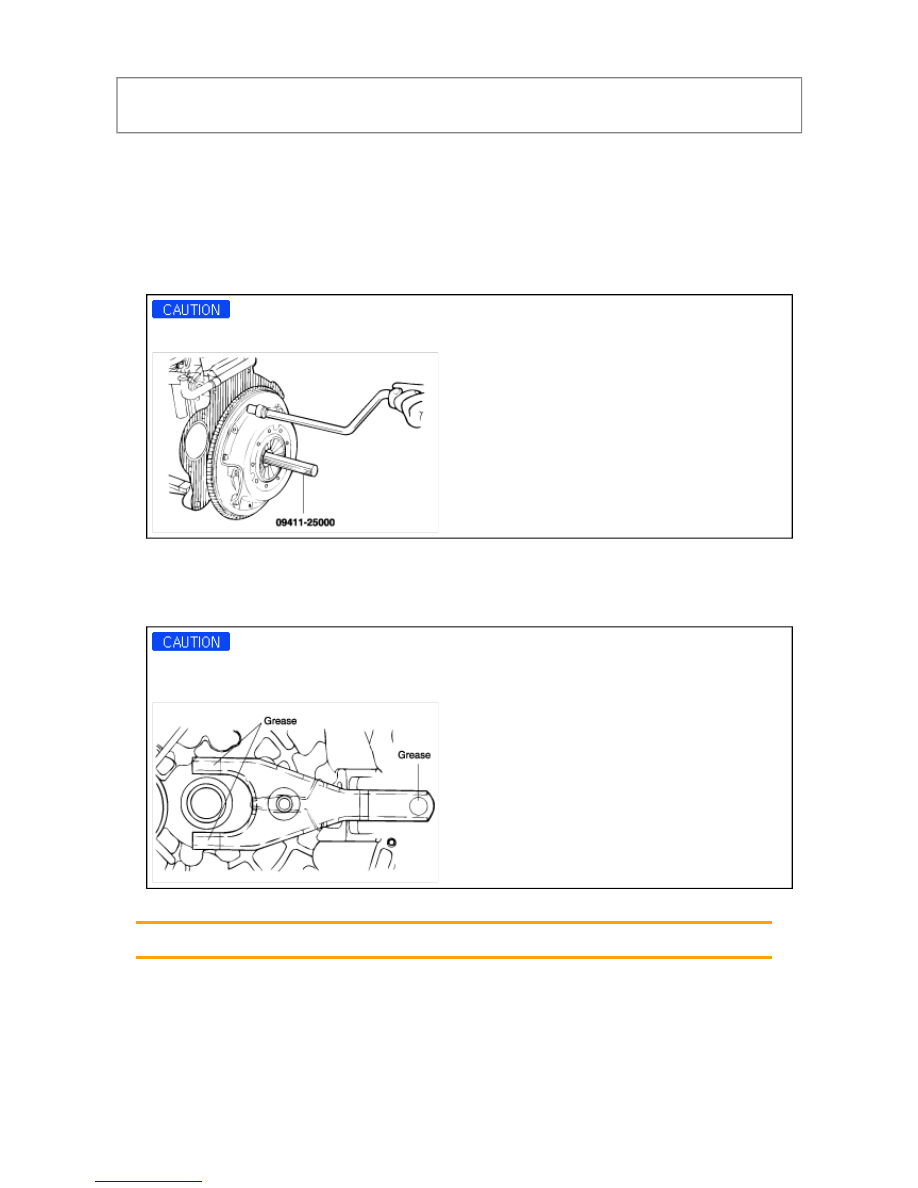Hyundai Tiburon (2003 year). Manual - part 116

TIBURON(GK) > 2003 > G 2.7 V6 DOHC > Clutch System > Clutch System > Clutch Cover And Dinode >
Repair procedures, TIBURON(GK) > 2003 > G 2.7 V6 DOHC > Clutch System > Clutch System > Clutch
Cover And Dinode > Repair procedures
REMOVAL
1. Drain the clutch fluid and transaxle gear oil.
2. Remove the transaxle assembly.
3. Insert the special tool (09411-25000) in the clutch disc to prevent the disc from falling.
4. Loosen the bolts that attach the clutch cover to the flywheel in a star pattern.
5. Loosen the bolts in succession, one or two turns at a time, to avoid bending the cover flange.
DO NOT clean the clutch disc or release bearing with cleaning solvent.
INSTALLATION
1. Apply multipurpose grease to the release bearing contact surfaces and the release cylinder contact surface of
the clutch release fork assembly.
When installing the clutch, apply grease to each part, but be careful not to apply excessive grease. It can
cause clutchslippage and judder.
2. Apply multipurpose grease into the groove of the release bearing.
CASMOLY L9508